|
* 596 Scheila *
From Wikipedia, the free encyclopedia Jump to: navigation, search 596 Scheila 596-2010-12-12-12hr-UT.jpg 596 Scheila outbursting as seen in a 5 min photo with a 24" telescope Discovery[1] Discovered by August Kopff Heidelberg (024) Discovery date 1906-Feb-21 Designations MPC designation 596 Scheila Minor planet category Main-belt Asteroid[1] Main-belt comet[2] Orbital characteristics[1] Epoch July 23, 2010 T_jup = 3.209 Aphelion 3.4103 AU (Q) Perihelion 2.4428 AU (q) Semi-major axis 2.9265 AU (a) Eccentricity 0.16529 Orbital period 5.01 yr Mean anomaly 228.81° (M) Inclination 14.662° Longitude of ascending node 70.719° Argument of perihelion 175.95° Physical characteristics Dimensions 113.34 km (IRAS)[1] Sidereal rotation period 15.848 hr[1] Albedo 0.0379[1] Apparent magnitude 11.67 to 15.32 Absolute magnitude (H) 8.9[1] 596 Scheila is a main belt asteroid[1] and comet orbiting the Sun. It was discovered on 21 February 1906, by August Kopff from Heidelberg.[1] Kopff named the asteroid after an English female student with whom he was acquainted.[3] On December 11.4, 2010, Steve Larson of the Catalina Sky Survey detected asteroid Scheila showing a comet-like appearance: it displayed a "coma" of about magnitude 13.5.[4] Scheila's coma is likely the result of an asteroid impact[5] as happened with P/2010 A2. But cometary outgassing is not ruled out. Astronomer David Jewitt estimates that asteroid-on-asteroid impacts may occur annually.[2] An impact could have excavated a crater on the order of 50-100 meters across.[5] Archived Catalina images suggest that this outburst may have started around December 3, 2010.[6] Spectroscopic studies may be able to determine if volatile gas is present in the coma or if it contains only dust and gravel. Imaging with the 2-meter Faulkes Telescope North revealed linear tail.[7] Scheila is too large for electrostatics to launch dust.[2] Scheila last came to perihelion on 2007 May 20 and will not come to perihelion again until 2012 May 19. |
2011年01月10日
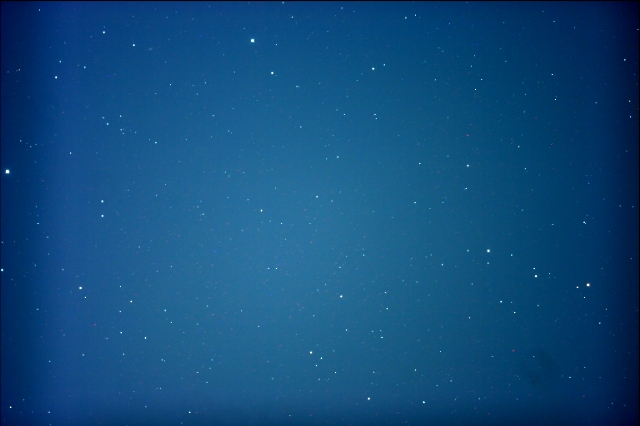

小惑星596<シェイラ>
2011/01/10T22:10:10〜22:28:41までの60秒間露光16枚を合成
画面中央の天体
露光時間:60秒*16=16分
ε160/530mm + LPS-P2 + 300D/ISO400 / EM-200Temma2
StellaImage4で合成、レベル補正とリサイズ
2011年01月13日
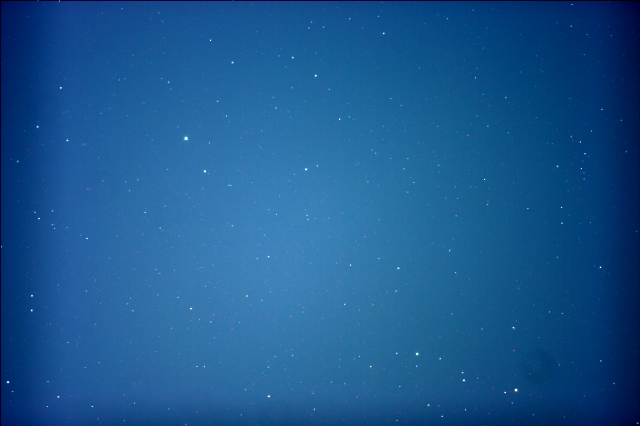
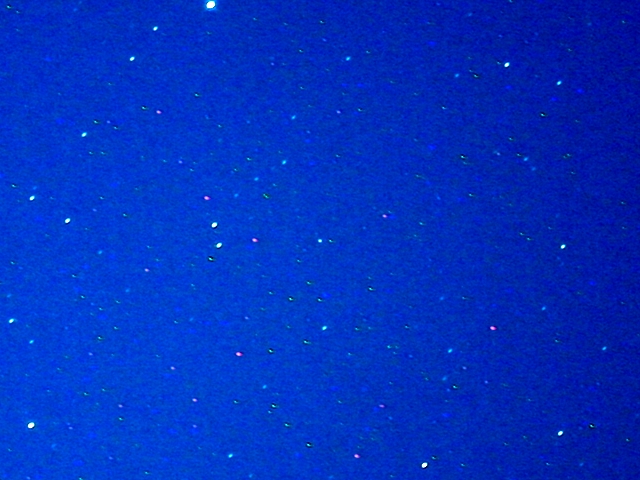
小惑星596<シェイラ>
2011/01/13T22:07:10〜22:24:39までの60秒間露光16枚を合成
画面中央の天体
露光時間:60秒*16=16分 O-C=+10秒
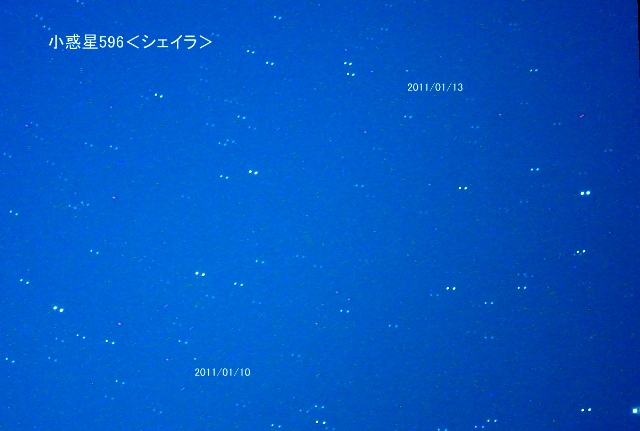
小惑星596<シェイラ>3日間の動き
2011/01/13と2011/01/13の写真をを合成
シエラは北西に向かって天球上を移動
ε160/530mm + LPS-P2 + 300D/ISO400 / EM-200Temma2
StellaImage4で合成、レベル補正とリサイズ
2011年02月01日
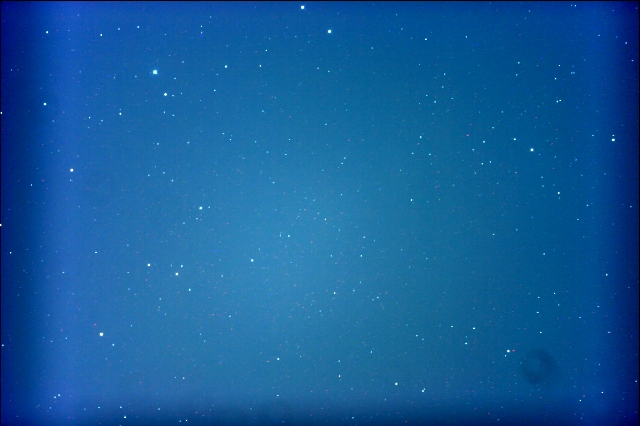
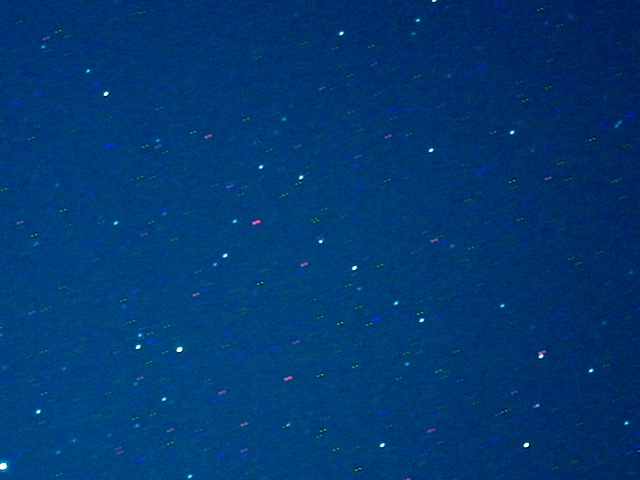
小惑星596<シェイラ>
2011/02/01T21:12:06〜21:29:26までの60秒間露光16枚を合成
画面中央の天体
露光時間:60秒*16=16分
ε160/530mm + LPS-P2 + 300D/ISO400 / EM-200Temma2
StellaImage4で合成、レベル補正とリサイズ
2011年02月02日

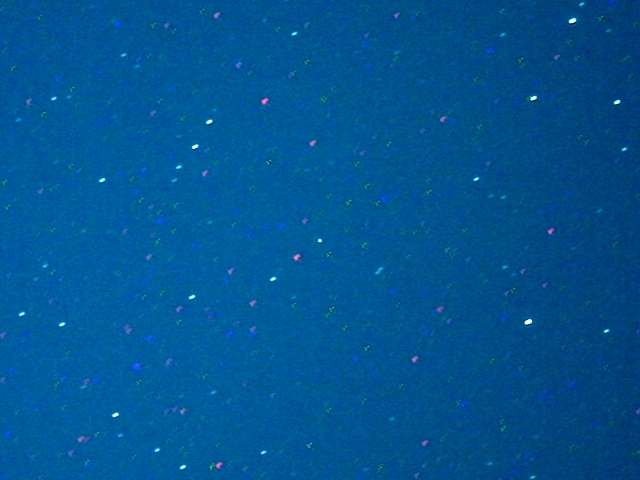

小惑星596<シェイラ>
2011/02/02T21:21:05〜21:38:36までの60秒間露光16枚を合成
画面中央の天体
露光時間:60秒*16=16分
ε160/530mm + LPS-P2 + 300D/ISO400 / EM-200Temma2
StellaImage4で合成、レベル補正とリサイズ
「彗星・小惑星目録」に戻る 「C/2010v1 池谷・村上彗星」に戻る 「C/2009 P1 ギャラッド彗星」に進む